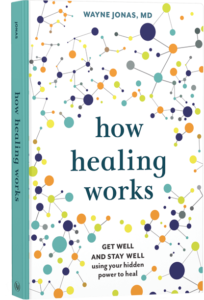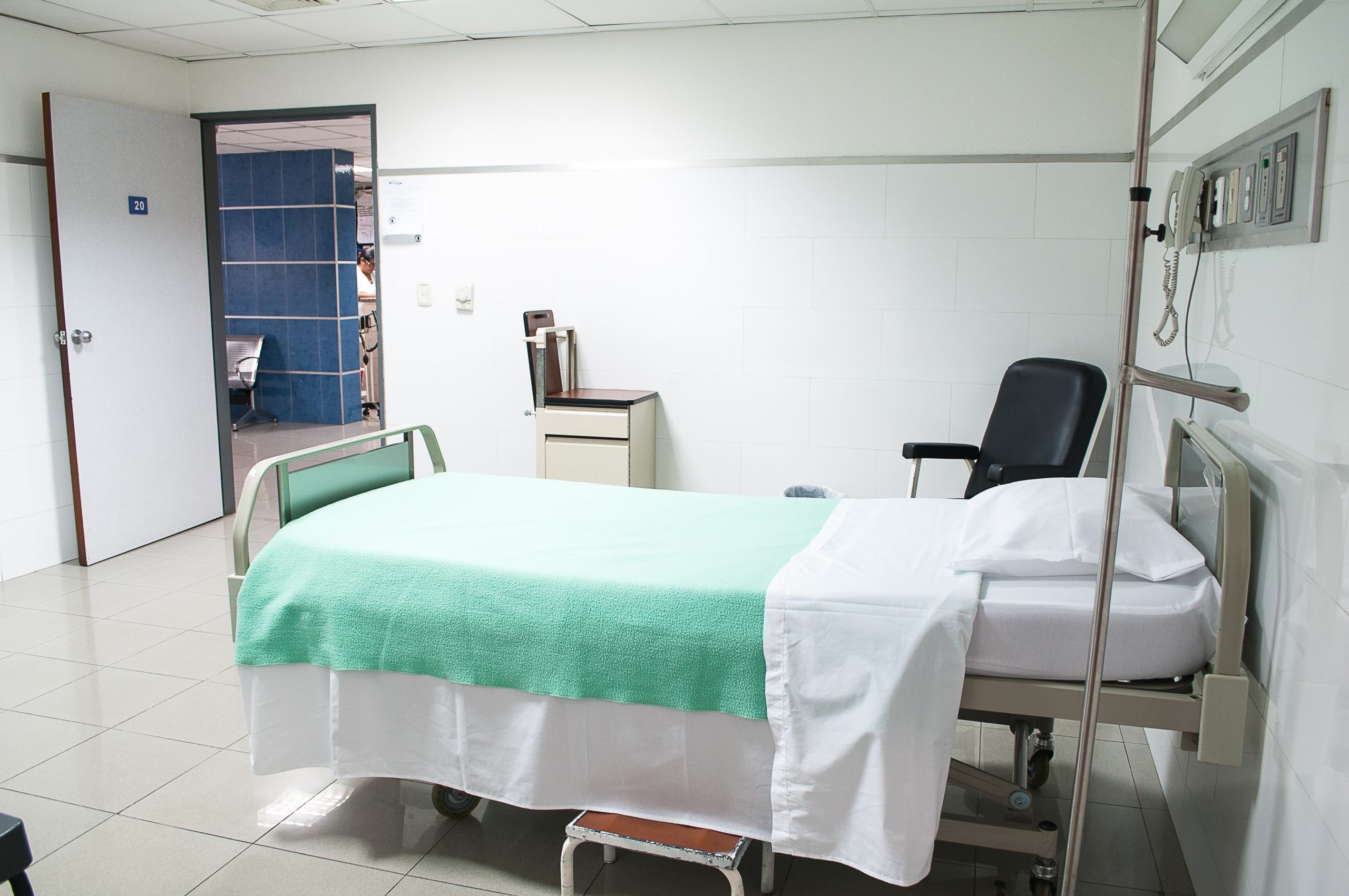While I am most comfortable being the doctor in the patient-doctor encounter, I recently had the tables turned during a three-day stay at the hospital while recovering from a burst appendix.
My hospital experience had me thinking about a topic I focused on quite a bit while running Samueli Institute—the role noise plays in patient healing. We know a quiet environment helps patients heal, yet noise is still a major problem in most hospitals.
“Healing spaces evoke feelings of comfort and calm. Intrusive noise does just the opposite,” says Lorissa MacAllister, an expert in creating environments for health and president and founder of Enviah. Noise disturbs sleep and increases stress, causing blood pressure and heart rate to spike. It also negatively impacts communication between patients and staff.
Sources of hospital noise include alarms, equipment, paging systems, staff voices, and in multi-bed rooms, other patients. The main cause of poor sleep is often noise from having another patient in the room (staff talking to and caring for the other patient, equipment, visitors, and patient sounds such as coughing or crying out). Hard floors, walls and ceilings also contribute to a noisy environment by reflecting sound, instead of absorbing it.
A Strong Business Case for Quieter Hospitals
Noise has become so much of an issue that CMS reimbursements depend on it. “How often was the area around your room quiet at night?” is one of the questions in the Hospital Consumer Assessment of Healthcare Providers and Systems (HCAHPS) survey. These survey results are tied to CMS reimbursements via the hospital value-based payment model. This question has hospital and health system leaders paying attention to the issue of sound.
In a guide exploring how the physical environment of hospitals can be used to improve the patient experience, the American Hospital Association and the American Society for Healthcare Engineering called out noise as one of three key factors that affect the patient experience. MacAllister was a contributor to the guide, called Improving Patient Experience Through the Health Care Physical Environment and published by the Health Research & Educational Trust.
“Noise is not just the decibel level,” says MacAllister. “The inflection and variability of noise matters.” For example, being able to overhear a conversation is more disruptive for hospital patients than constant loud sounds.
Research has shown that single-bed rooms are one of the most effective ways to reduce noise. Single-bed rooms also promote better communication with hospital staff, which is linked to less anxiety, better care at home after discharge, and higher satisfaction. Patients in single rooms consistently report higher satisfaction with communication from nurses and physicians than those in multi-bed rooms. “Personal spaces for private conversations are important,” says MacAllister. “Rooms should be set up in ways to enable providers to have eye level conversations with patients.”
More Noise Reduction Interventions
Some interventions to reduce noise in hospitals are simple, while others require environmental interventions led by hospital and health system leaders. Providers can help patients reduce noise by encouraging them to:
- Close the door
- Watch TV to drown out noises from machines
- Listen to music, audio books, podcasts or healing imagery on their phone
- Have the hospital subscribe to stress-relieving TV channels such as Continuous Ambient Relaxation Environment® (C.A.R.E.)
Along with single-bed rooms, other effective environmental interventions for reducing noise in hospitals include installing high-performance sound-absorbing ceiling tiles and eliminating or reducing sources of noise, such as replacing a loud overhead paging system with a noiseless paging system.
The Optimal Healing Environment
A quiet physical space in which healing occurs is part of an Optimal Healing Environment (OHE), which stimulates and supports the inherent healing capacity of patients, along with their families and healthcare staff. Based on evidence-based design and healing principles, my team and I developed the concept of an OHE while at Samueli Institute, with the assistance of MacAllister on the external environment.
The four environments of the OHE framework—internal, interpersonal, behavioral, and external—work synergistically to support and stimulate health creation and healing.
The External Environment
The external environment consists of the physical environment where we work, live and play and the impact of our presence on the planet as a whole. It also includes the built environment in hospitals.
The external environment should be comprised of healing spaces, which evoke a sense of cohesion of mind, body and spirit and ecological sustainability. “Healing spaces optimize and improve the quality of care, outcomes and experiences of patients and staff. They use physical design to enhance the individual’s innate healing potential,” says MacAllister.
The Internal Environment
The internal environment, our deepest level, is made up of our minds and spirits, emotions, intentions and life purpose.
The Interpersonal Environment
The interpersonal environment focuses on personal, professional and organizational relationships. Healing relationships between patients and providers are the foundation of clinical care and essential for healing to occur. Healing organizations are operationalized in the interpersonal environment. These organizations provide an appropriate culture, including the structures, processes and resources to stimulate and support healing.
The Behavioral Environment
The behavioral environment is made up of the actions we take to create health and promote healing by enhancing our innate ability to heal. An optimal behavioral environment supports the practice of healthy lifestyles and the application of integrative healthcare. This includes avoiding toxic substances, eating healthy food, movement and exercise, stress management and sufficient quality sleep.
Evidence generated by Samueli Institute and others suggests that OHEs increase provider and patient satisfaction and improve patient outcomes. The OHE framework has been studied in systematic reviews, survey research, and case study analysis.
Read more about Optimal Healing Environments.
Environments for Health
MacAllister is interested in the way people interact with—and are affected by—the physical environment. Her research focuses on exploring direct outcome measures such as H-CAHPS scores and effectiveness and productivity. She has conducted studies to explore and assess the OHE and healing spaces. Through service on national boards, MacAllister is helping to develop a way to standardize the process of creating environments for health.
For those looking to improve the ability of your hospitals to heal, consider the impact of sound and the external environment. Companies like Enviah create environments for health by aligning the people, culture, business and built environments of organizations. The company’s multidisciplinary approach covers architecture, management science, design and wellness.
References
The material is this blog post was derived from the research, articles, and data below.
[i] Ulrich R, Zimrin C, The Role of the Physical Environment in the Hospital of the 21st Century: A Once-in-a-Lifetime Opportunity. Concord,CA: The Center for Health Design, 2004. https://www.healthdesign.org/sites/default/files/Role%20Physical%20Environ%20in%20the%2021st%20Century%20Hospital_0.pdf. Accessed 12/3/19.
[ii] What You Should Care About the Most During Your Hospital Stay. http://enviah.com/blog/. Accessed 12/3/19. Accessed 12/3/19.
[iii] Sakallaris BR, MacAllister L, Voss N, Smith K, Jonas WB. Optimal Healing Environments, Global Advances in Health and Medicine. 2015;4(3): 40-45.
[iv] Krasner MS, Epstein RM, Beckman H, et al. Association of an educational program in mindful communication with burnout, empathy, and attitudes among primary care physicians. JAMA. 2009;302(12):1284-1293.
[v] Christianson JB, Finch, MC, Findlay B, Jonas WB, Choate CG. Reinventing the patient experience. Strategies for hospital leaders. Chicage, IL: Health Administration Press; 2007.
[vi] Stewart M, Brown JB, Donner A, et al. The impact of patient-centered care on outcomes. J Fam Pract. 2000;49(9):796-804.
[vii] Casey A, Chang B-H, Huddleston J, Virani N, Benson H, Dusek JA. A model for integrating a mind/body approach to cardiac rehabilitation: outcomes and correlators. J Cardiopulm Rehabil Prev. 2009 Jul-Aug;29(4):230-8.

Your Health Into Your Own Hands
Drawing on 40 years of research and patient care, Dr. Wayne Jonas explains how 80 percent of healing occurs organically and how to activate the healing process.

